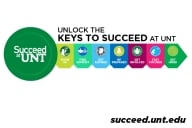You have /5 articles left.
Sign up for a free account or log in.
College communications, alumni relations, and marketing professionals all seem to agree that using social media is crucial to the future of branding and fund-raising in higher education. But they still lack the staff and expertise to do what they think they could with Facebook et al., as well as the analytical tools to figure out whether what they are doing has any real value.
This is according to a survey being released today by the Council for Advancement and Support of Education (CASE), in conjunction with the consultancy mStoner and the commercial research firm Slover Linett.
The survey, which drew from a sample of CASE members specializing mainly in those three administrative areas, found that the vast majority of respondents believe social media tools have “great potential” for achieving “important goals” in their divisions, and had no trouble getting “support and buy-in” from their institutions. Facebook is believed to be the most valuable among the mainstream social media sites, with Twitter running a distant second and LinkedIn and YouTube following closely after that.
But despite all that good faith, many institutions have found it difficult to quantify the value of their activities on social media sites. More than two-thirds agree that “it is difficult to measure ‘return on investment’ from the use of social media.”
Recently, the proverbial writing on the wall in higher education has favored terms such as “metrics,” analytics,” and “return on investment” (ROI). Unlike, say, libraries, many of which are under pressure to develop ways to account for their value in budgetary terms, social media applications would appear to have been born with an innate knack for the language of ROI: numbers of friends, followers, profile views, retweets, “likes,” and so on.
Indeed, respondents to the new CASE survey said they rely heavily on the number of friends, “likes,” comments, and followers they've accumulated when assessing how well their social media strategies are working.
But such metrics can be misleading. The success of a college’s Facebook or Twitter strategies probably has very little to do with the volume of acolytes those figures might suggest, says Andrew Gossen, executive director of social media strategy at Cornell University. More likely, it has to do with subtler, less widely understood measures that draw on the finer points of networking theory.
For example, not all friends and followers are created equal. A college might have any number of Facebook friends or Twitter followers who pay little or no attention to any of the content the college is pushing through those channels. And even if those friends and followers are paying attention and engaging with a college’s content, the simple metrics say nothing about whether anybody is paying attention to those people, says Gossen. In other words, an attentive Facebook friend who has a thousand attentive friends of his own is a lot more valuable than a thousand inattentive friends -- or one attentive friend who exerts social influence on nobody else.
The simple metrics that prevail in many college administrative offices not only fail to account for these nuances, they are easy to game, says Gossen. And a lot of snake oil is being sold as a result. “A lot of social media firms will promise an x-percentage increase in followers per day, but you have no idea whether those are people who are actually paying attention to you, or whether they have some bank of workers in some third-world country doing nothing but follow [clients] on social media all day,” he says.
A second wave of analytics tools, such as the influence-tracking website KLOUT, has begun to make more rigorous accounting possible, Gossen says. But insofar as most college officials still lean on basic metrics and anecdotes, their evaluations of how well they are using social media are far from scholarly, he says.
Unreliable accounting practices might be to blame for what many of the CASE respondents identified as the main barrier to using social media effectively: a lack of staff and expertise.
When the surveyors asked the responding communications, development, and alumni relations workers what was keeping them from realizing the perceived potential of social media, the top responses were: staffing for day-to-day content management; staffing for site developments; lack of relevant human resources; and lack of expertise for effective implementation. (Among the least-cited barriers to social media strategy were privacy issues, institutional red tape, and lack of interest from administrators.)
Once various administrators learn how to use more sophisticated metrics to demonstrate the value of their social media outreach, they might be able to make a convincing case for more staffers to devote to it, says Rae Goldsmith, vice president for advancement resources at CASE.
That might be a catch-22, she adds, since those administrators might require more staffers to realize, and then demonstrate, the value they are convinced that it holds.
Meanwhile, Kevin Tynan, executive director for marketing and communications at the University of Illinois at Chicago, says that colleges should be wary of assuming that the social media phenomenon holds as much potential value as they seem to think it does. Tynan pointed to the fact that, according to the CASE survey, more than a third of social media activity by college officials was being done without much planning.
“By asking if you are doing it and what the goals are, [the survey] assumes people should be doing it and schools have meaningful goals, when in fact, [the] goals may be no more than ‘because others are doing it,’ ” Tynan said in an e-mail.
For the latest technology news and opinion from Inside Higher Ed, follow @IHEtech on Twitter.








